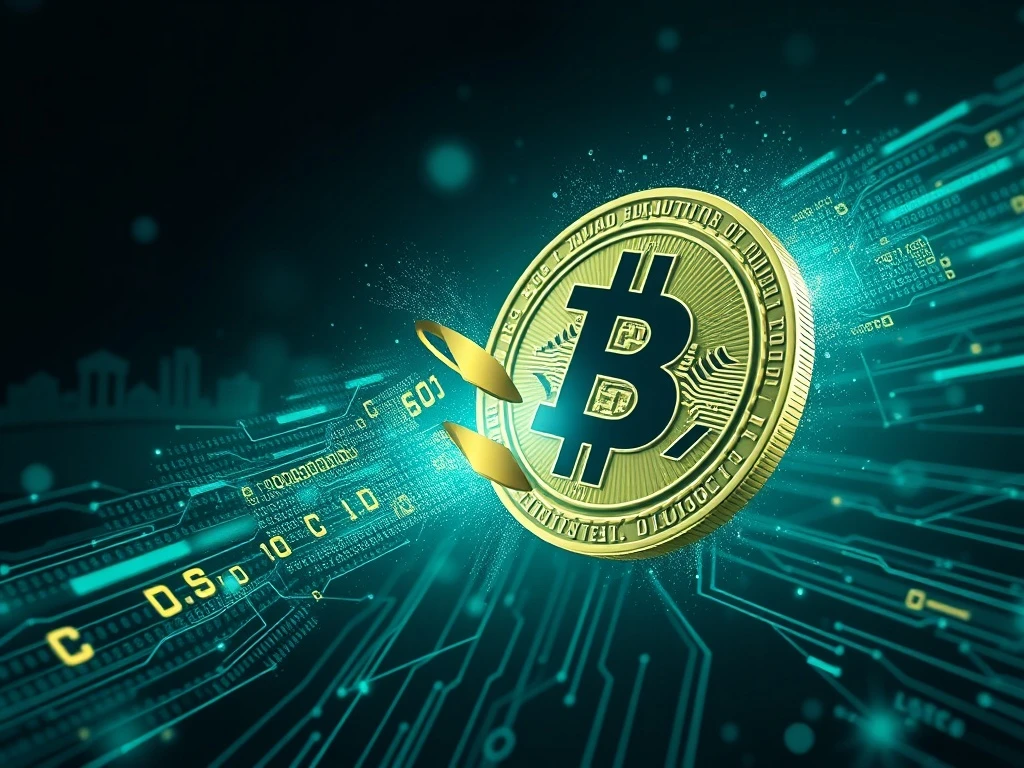Circle USDC: The Controversial Push for Reversible Transactions

Circle’s potential move to introduce **reversible USDC transactions** sparks a significant debate within the cryptocurrency community. This decision directly challenges the foundational **crypto ethos** of immutability, where transactions are final. The company, a major stablecoin issuer, is exploring mechanisms to recover funds lost to fraud or hacks. This initiative could reshape how stablecoins function and how they interact with the broader financial world.
Circle USDC: A Pivotal Shift in Stablecoin Design
Circle, the world’s second-largest stablecoin issuer, is examining the possibility of introducing reversible transactions for its popular **Circle USDC** stablecoin. Circle President Heath Tarbert confirmed this exploration to the Financial Times. The company seeks ways to retrieve funds in cases of fraud or hacking. However, this aim creates an inherent tension. It conflicts with the principle of settlement finality, a core tenet of blockchain technology.
Tarbert articulated this dilemma clearly. He stated, “We are thinking through [. . .] whether or not there’s the possibility of reversibility of transactions, right, but at the same time, we want settlement finality.” He added, “So there’s an inherent tension there between being able to transfer something immediately, but having it be irrevocable […].” This exploration marks a significant departure from traditional crypto principles.
Reversible Transactions: A Challenge to Crypto Ethos
The concept of **reversible transactions** directly confronts the established **crypto ethos**. This ethos emphasizes that blockchain transactions are permanent and beyond centralized control. Supporters of decentralization view immutability as a critical security feature. It prevents unilateral changes by issuers or validators. Consequently, any move towards reversibility raises questions about the fundamental nature of cryptocurrencies.
Critics worry about increased centralization. They argue that giving an entity like Circle the power to reverse transactions could undermine trust in decentralized systems. However, proponents believe such a feature could enhance user protection. It might also foster greater mainstream adoption. This ongoing debate highlights a crucial philosophical divide within the crypto space.
Combating Stablecoin Fraud: A Practical Necessity?
Despite the philosophical clash, transaction reversibility offers practical benefits, particularly in combating **stablecoin fraud**. Victims of scams or hacks often have no recourse in the immutable crypto landscape. A reversibility feature could change this. It would provide a mechanism for fund recovery, potentially saving users millions.
Consider the Cetus exploit. Attackers stole over $220 million in digital assets on May 22. Sui validators successfully froze $162 million of these funds. A week later, the Sui community approved a governance proposal to return the frozen assets to Cetus. This event demonstrated the utility of fund freezing in crisis situations. While some decentralization advocates criticized the validators’ ability to freeze funds, others praised the swift action. They saw it as a vital step against industry hacks. This example underscores the real-world impact of such capabilities.
The Sui community passed a vote for frozen Cetus funds. Source: Sui
Bridging to TradFi Integration: Adopting Traditional Finance Features
Circle’s exploration of reversibility also aligns with a broader vision for **TradFi integration**. Heath Tarbert believes the blockchain industry can benefit from adopting certain features from traditional finance. He acknowledged blockchain technology’s superiority but noted some benefits of the current system are absent in crypto. These include mechanisms for fraud protection.
Tarbert suggested that developers recognize the need for “some degree of reversibility for fraud.” This would ideally happen “provided that all parties agree.” This approach seeks to combine the best aspects of both worlds. It aims to leverage blockchain’s efficiency while incorporating the consumer protections found in legacy financial systems. Such a hybrid model could significantly accelerate stablecoin adoption by institutions and everyday users alike.
Circle’s Broader Vision: Institutional Infrastructure and Arc
The discussion around reversible transactions does not occur in isolation. It forms part of Circle’s broader push into institutional-grade infrastructure. In early August, Circle unveiled Arc, its new layer-1 (L1) blockchain. Arc aims to provide an “enterprise-grade foundation” for stablecoin payments, foreign exchange, and capital markets applications. Notably, **Circle USDC** will serve as Arc’s native gas token for blockchain transactions.
Circle plans to roll out Arc as a public testnet this fall. A full launch is anticipated by the end of 2025. This rollout includes integration with Fireblocks’ digital asset custody and tokenization platform. Fireblocks will provide custody and compliance support solutions. This partnership will grant banks and asset managers access to the blockchain from day one. Fireblocks currently serves over 2,400 financial institutions. This strategic move underscores Circle’s commitment to mainstream financial adoption and robust compliance.
Source: Fireblocks
The Future of Reversible Transactions in Stablecoins
Circle’s controversial exploration of **reversible transactions** represents a critical juncture for stablecoins and the wider crypto industry. This initiative could address significant challenges like **stablecoin fraud** and enhance user confidence. It also signals a strategic effort towards deeper **TradFi integration**. Balancing the core **crypto ethos** of immutability with the practical needs of a secure, accessible financial system remains the central challenge.
The outcome of Circle’s research and potential implementation will undoubtedly shape the future of stablecoins. It will influence their role in both decentralized finance and traditional financial markets. The debate continues: can crypto evolve to embrace traditional safeguards without sacrificing its foundational principles?









